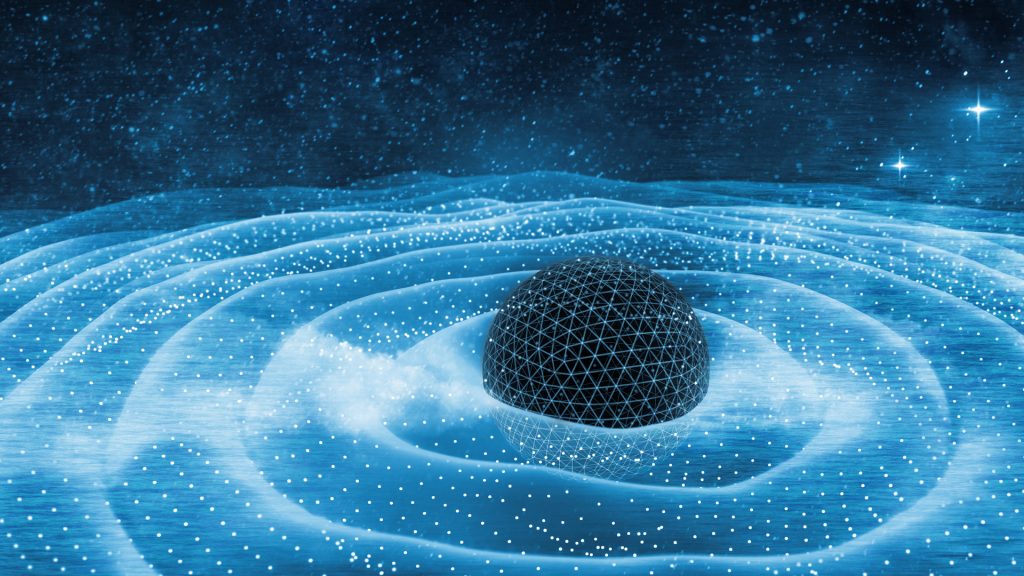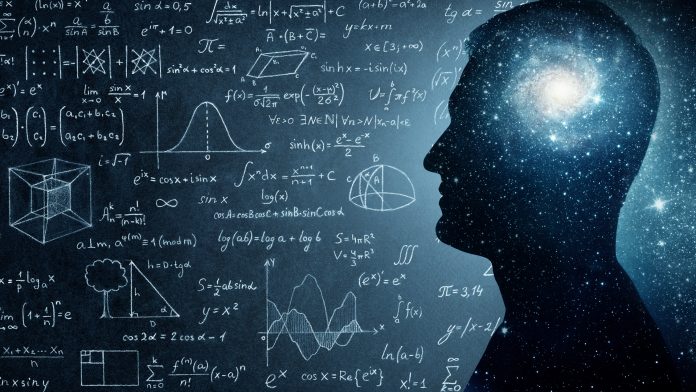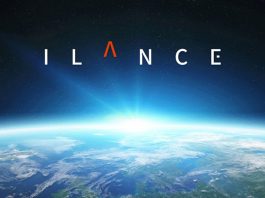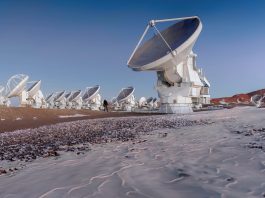The National Science Foundation (NSF) works to push the boundaries of knowledge, explains Physics Division Director, Dr Denise Caldwell.
‘Promote the progress of science.’ This mandate from the National Science Foundation Act of 1950, which created the National Science Foundation (NSF), lies at the core of what the NSF Physics Division does. Awards in the Division’s portfolio support the research needed to address a scientific question that is at the frontier of knowledge as it is currently known, while at the same time extending and redefining that frontier. But the Physics Division’s activities go well beyond that. Inherent in the implementation of this portfolio, which includes significant support for students and junior scientists, is the preparation of the next generation of a diverse, advanced, high-tech workforce and the development of innovative new technologies that arise in the quest to answer some of the hardest questions that Nature can pose.
Support for physics research through the Physics Division covers a broad spectrum of science questions, from seeking to understand the fundamental structure of the Universe, to probing the nature of the fundamental particles that make up this Universe; from elucidating the curious properties of quantum mechanics, to taking advantage of these properties to enable a second quantum revolution; and from understanding the complex behaviour of plasmas, to searching for possible overriding principles governing the behaviour of living systems.
A unique position
Because it operates as a single unit within the NSF, the Physics Division is in a unique position to bring together those areas of physics for which the Division has primary responsibility (atomic, molecular, and optical physics; elementary particle physics; particle astrophysics; nuclear physics; gravitational physics; plasma physics; and the physics of living systems) into a concentrated effort that speaks for physics overall and not a specific sub-area of physics. Rather than function entirely independently, the Physics Programme Directors who lead each of these sub-areas function as a team to look for how the special tools and approaches appropriate to a particular sub-area can reinforce each other in addressing the driving scientific questions identified by the community.
The Physics Division also partners extensively with other parts of the NSF to support research that connects these areas of physics with scientific research outside of physics. These interactions take place regularly on a programme-to-programme level, as well as on an NSF-wide basis. As an example, the Division currently plays a key role in the emphasis areas of Quantum Information Science and Artificial Intelligence (AI) that promise to bring about major changes in how we do science, as well as drive new technologies for the 21st century.
Funding
The National Science Foundation provides the bulk of its research resources to the academic community through making awards or agreements with academic institutions to fund research proposals generated by faculty at these institutions. The Physics Division employs three different funding modes in distributing resources. The predominant mode is funding for individual investigators or small groups for research focused on a specific scientific project.1 The second mode is through the Physics Frontiers Centers2 programme, which funds large-scale projects where the combined efforts of a larger group of investigators will result in progress above and beyond what could be reached by the individuals working separately. The final mode, support for operations for major facilities, is necessitated by the fact that research in areas such as particle physics, nuclear physics, and gravitational physics can require tools and instrumentation that is of such a scale that it can only be provided through international collaborations.
Gravitational waves
A look at some of the recent successes and future plans of the Division probably provides the best illustration of the range of the Division’s activities; and serves as an opportunity to point out instances where overlap between sub-areas of physics has enabled or will enable future progress.
Arguably the most earth-shaking news from the Physics Division in the past five years was the announcement in February 2016 of the first ever detection of a gravitational wave, GW150914, by the US National Science Foundation’s Laser Interferometer Gravitational-wave Observatory (LIGO) interferometer.3 The Physics Division shoulders the primary responsibility for supporting the LIGO laboratory’s operations, which operates in a fully collaborative mode with the VIRGO observatory in Italy. Numerous detections have followed this first observation. At the conclusion of the third scientific run, the introduction of quantum squeezing into the interferometer increased the frequency of detections to approximately one per week. An upgrade of the interferometer that is presently underway to introduce frequency-dependent squeezing, done in collaboration with researchers from the UK and Australia, promises yet another factor of two in sensitivity.

The Physics Division shoulders the primary responsibility for supporting the Laser Interferometer Gravitational-wave Observatory’s (LIGO) operations, where, in 2016, the first ever detection of a gravitational wave, GW150914, was made
Testing the Standard Model
In spite of the tremendous success of the Standard Model in describing the spectrum of fundamental particles, it is well-known that there are questions for which the Standard Model has no answer. Looking for these answers remains a major focus of investments in elementary particle physics and particle astrophysics. One major test of some of the theoretical approaches to addressing the shortcomings of the Standard Model is the extent to which the electron possesses a dipole moment. The ACME4 experiment, which employed atomic-physics techniques to measure possible distortion of the electron’s shape, reduced by an order of magnitude the existing limit on this distortion and demonstrated that at this new level the Standard Model still holds. The success of this approach, and the promise that a unified approach between atomic physics and elementary particle physics could open new possibilities for looking for limitations of the Standard Model, has prompted the Division to ask the community to think about other experiments of this type that could be paradigm-changing.5
AI
Artificial Intelligence, when utilised and explored through direct interaction with a scientific domain, offers significant opportunities for enhancing what we can learn about the science as well as informing new directions for AI itself. In recent years, the Physics Division has seen a growth of the utilisation of AI across its programmes that bear this out. Most recently, the Division took a major step in supporting the new AI Institute for Artificial Intelligence and Fundamental Interactions (IAIFI).6 The expectation is that what is learned in this Institute will inform progress across multiple sub-areas of physics served by the Division.
Partnerships
The Physics Division also prides itself on the very effective partnerships we enjoy with other federal funding agencies as well as private groups. These are most extensive in elementary particle physics and particle astrophysics, nuclear physics, gravitational physics, and plasma physics. The NSF/DOE Partnership in Basic Plasma Science and Engineering,7 led by the Physics Division but also including participation from other NSF divisions, has been in effect for over 25 years and supports the range of plasma physics from plasma astrophysics to plasma processing. As certified in the US-CERN agreement of 2015, signed by the NSF Director, the Secretary of Energy, and the Director General of CERN, the NSF and the High Energy Physics Division of the Department of Energy Office of Science share responsibility for the US CERN programme. As part of this agreement, the Physics Division is leading the NSF’s participation in the ongoing High Luminosity upgrade of the two large detectors, ATLAS and CMS, through the NSF-wide Major Research Equipment and Major Facilities Construction (MREFC) Account.
The NSF also provides support for the US participation in the LHCb detector at CERN, which utilises precision measurements of the beauty quark to look for differences between matter and anti-matter and recently reported on the internal structure of the pentaquark.
Pushing boundaries
The National Science Foundation is especially fortunate in that the Programme Directors responsible for managing the research programmes in a Division are also recognised members of the research community they serve. They are in intimate contact with that community, and many continue to carry out independent research activities. The successes that the Division can report, and the promise of future scientific breakthroughs, relies on the group of extraordinary individuals who are Programme Directors within the Division. Their dedication to achieving the mission outlined in the first paragraph is what will enable the scientists whom the Division supports to continue to push the boundaries of knowledge and train those who will take the next steps in moving those boundaries even further.
References
1) See Division of Physics: Investigator-Initiated Research Projects | NSF- National Science Foundation
2) See Physics Frontiers Centers | NSF – National Science Foundation and US NSF – MPS – PHY – Physics Frontiers Centers (PFC)
3) See LIGO Lab | Caltech | MIT
6) See IAIFI
7) See NSF/DOE Partnership in Basic Plasma Science and Engineering | NSF – National Science Foundation
Dr Denise Caldwell
Director
Physics Division
National Science Foundation (NSF)
+1 (703) 292 7371
dcaldwel@nsf.gov
Tweet @NSF
www.nsf.gov/div/index.jsp?div=phy
Please note, this article also appears in the fifth edition of our quarterly publication.









